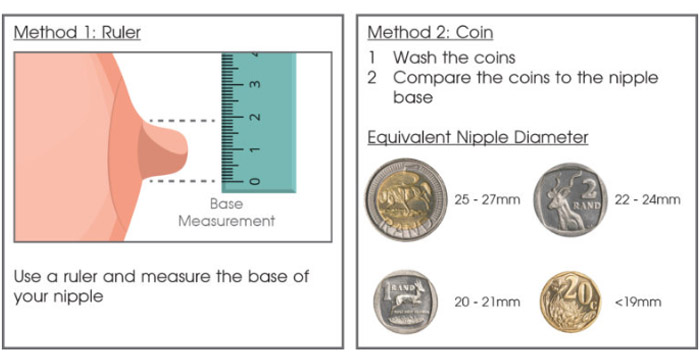When using a breast pump, it is essential to ensure that your nipples look and feel comfortable within the flange to ensure effective and comfortable pumping sessions. Here's what you should look for:
Centered and Positioned Correctly: Your nipples should be centered within the flange tunnel. They should not be rubbing against the sides or coming into contact with the walls of the flange. Proper positioning ensures a better seal and efficient milk expression.
Not Too Tightly Compressed: Your nipples should not be overly compressed or pinched by the flange. If the flange is too small, it may squeeze your nipples too tightly, leading to discomfort, reduced milk flow, and potentially soreness.
Not Sliding or Moving Excessively: Once your nipples are positioned within the flange, they should stay relatively stable during pumping. If they are sliding or moving too much, it may indicate that the flange size is not appropriate for your nipple shape and size.
Not Stretching Too Far into the Tunnel: The flange should not pull your nipples too far into the tunnel. If your nipples appear stretched or elongated during pumping, it may indicate that the flange is too big, causing inefficient milk expression and possible nipple soreness.
No Pain or Discomfort: A proper fit should not cause pain or discomfort during pumping. If you experience any pain, rubbing, or irritation on your nipples, it's essential to check the flange size and make sure it's appropriate for you.
If you're uncertain about the correct flange size for your breast pump, consider consulting a lactation consultant or breastfeeding specialist. They can assist you in determining the appropriate flange size and offer guidance on using the breast pump effectively and comfortably to maintain your milk supply and overall breastfeeding journey.

